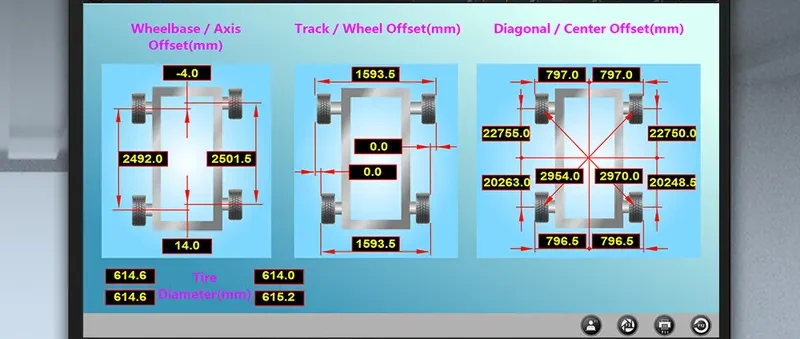Understanding Basics On What is Wheel Alignment?
Proper wheel alignment is crucial for the optimal performance and safety of your vehicle. Misaligned wheels can lead to uneven tire wear, poor handling, and decreased fuel efficiency. In this article, we will explore what wheel alignment is, how it works, and why it is essential for your vehicle’s health.
What is Wheel Alignment?
Wheel alignment refers to the adjustment of a vehicle’s suspension, the system that connects a vehicle to its wheels. It is not an adjustment of the wheels themselves, but rather of the angles of the tires, which affects how they make contact with the road. Proper alignment ensures that your vehicle’s tires wear evenly, which can enhance performance and extend the lifespan of the tires.
Key Components of Wheel Alignment
- Camber: This is the angle of the wheels when viewed from the front of the vehicle. If the top of the wheel leans towards or away from the car, it is known as positive or negative camber, respectively. Proper camber alignment is crucial for tire wear and stability.
- Toe: Toe alignment refers to the direction the tires point relative to the centerline of the vehicle. If the tires point inward, it is called toe-in, and if they point outward, it is called toe-out. Correct toe settings ensure that the tires roll parallel to each other, which helps in maintaining straight-line stability.
- Caster: Caster is the angle of the steering axis when viewed from the side of the vehicle. It affects the vehicle’s steering stability and cornering. Positive caster helps with straight-line stability, while negative caster can lead to wandering.
Why is Wheel Alignment Important?
- Improved Handling: Proper wheel alignment ensures that your vehicle handles correctly and responds accurately to steering inputs. Misaligned wheels can cause your car to pull to one side, making it difficult to control.
- Enhanced Safety: Misalignment can lead to uneven tire wear, which can compromise tire grip and increase the risk of blowouts. Proper alignment helps maintain the safety of your vehicle by ensuring optimal tire performance.
- Increased Tire Lifespan: When wheels are properly aligned, tires wear evenly, extending their lifespan. Uneven tire wear can lead to premature tire replacement, which can be costly.
- Better Fuel Efficiency: Misaligned wheels can create resistance, causing the engine to work harder and consume more fuel. Proper alignment can help improve fuel efficiency and reduce overall fuel costs.
Signs That Your Vehicle Needs Wheel Alignment
- Uneven Tire Wear: If you notice that your tires are wearing unevenly, it could be a sign of misalignment. Check the tread on all four tires regularly.
- Vehicle Pulls to One Side: If your vehicle consistently pulls to one side while driving on a straight road, it may be due to misaligned wheels.
- Steering Wheel Off-Center: If your steering wheel is not centered when driving straight, it could indicate alignment issues.
- Vibrations: Excessive vibrations in the steering wheel or through the vehicle can be a symptom of misalignment.
How is Wheel Alignment Performed?
Wheel alignment is performed using specialized equipment that measures the angles of the wheels and compares them to the manufacturer’s specifications. The process typically involves:
- Inspection: The technician will inspect the tires and suspension components for wear and damage.
- Measurement: Using alignment equipment, the technician measures the camber, toe, and caster angles of each wheel.
- Adjustment: The technician adjusts the angles to bring them within the manufacturer’s specifications. This may involve adjusting the suspension components and the steering.
- Test Drive: After adjustments, the vehicle is test-driven to ensure that it handles correctly and that the steering wheel is centered.
Wheel alignment is a critical maintenance task that ensures your vehicle’s safety, performance, and longevity. Regular alignment checks and adjustments can help prevent uneven tire wear, improve handling, and enhance fuel efficiency. If you notice any signs of misalignment, it is essential to have your vehicle inspected and aligned by a professional technician.
Buying a used VW. Buying used vauxhall, BMW, Jaguar, Ford, Volvo, Range rover, Bentley, Aston Martin, Porsche, Ferrari, Lamborghini, Maserati, Hyundai, Tesla, Honda, Pagani

